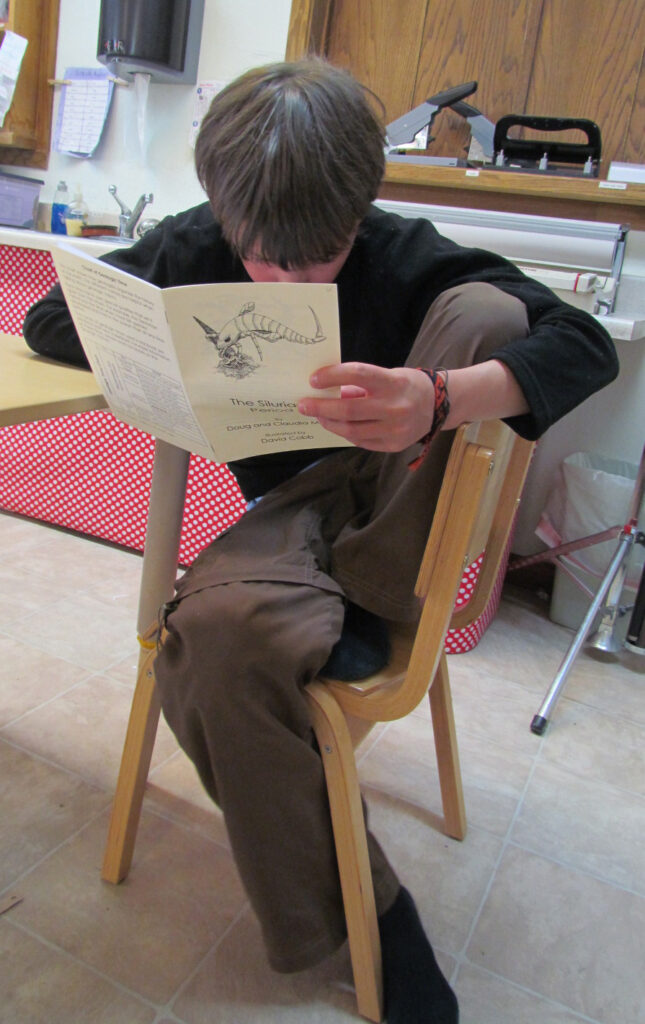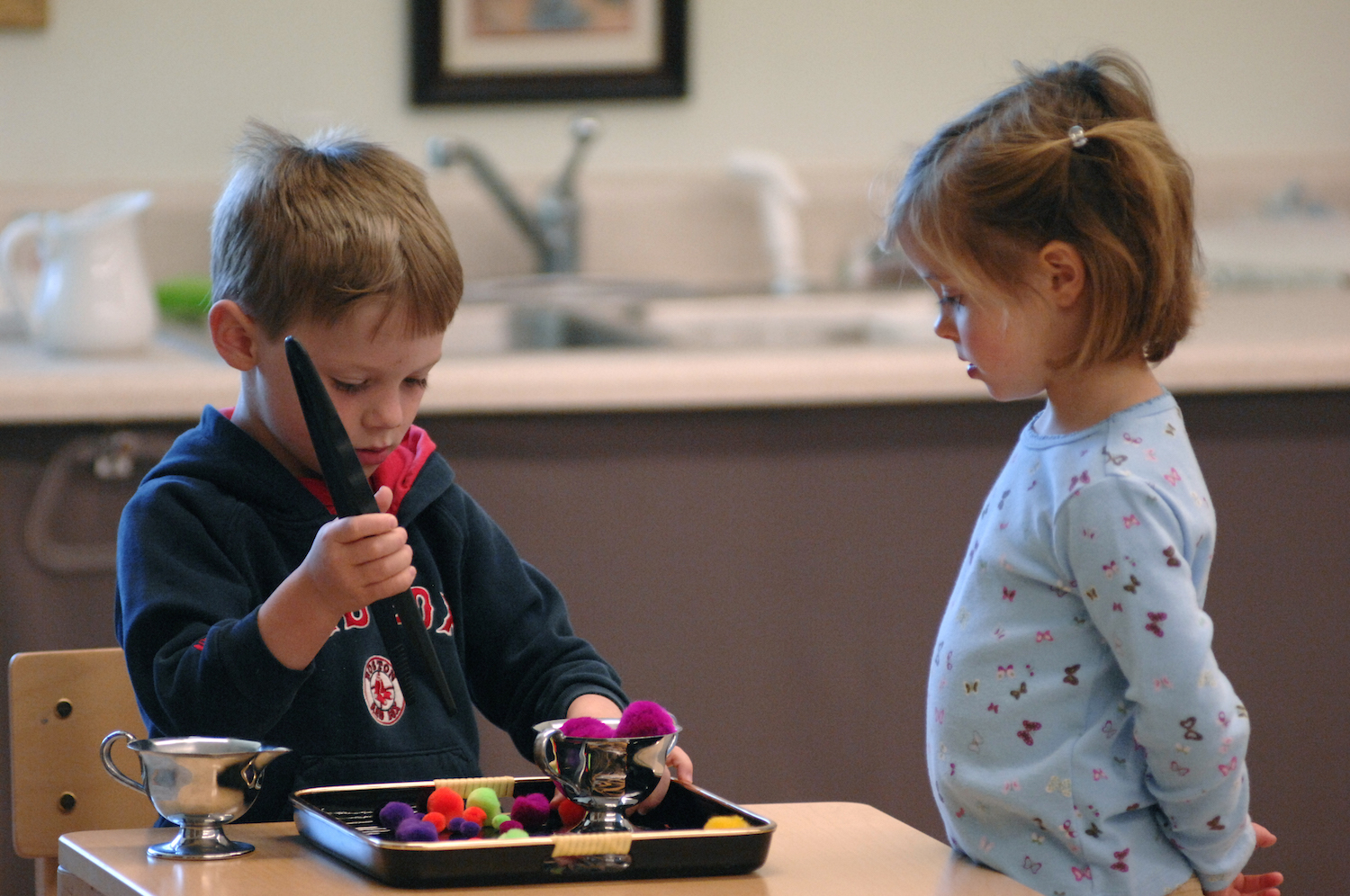In training, I was told that observation was the way I would know what actions to take with my students. Same for you?
Also in training, much, if not most, of my time was spent focusing on the “how”: all the things I would have to do to make a Montessori classroom. Once I got past my training (with the observation assignments behind me) most of my time in the classroom and out was spent, not-surprisingly, DOING.
The never-ending list of things to do took me on the path of least resistance, AKA those things that seemed urgent or imperative: attending to all the things that needed immediate attention like the child flitting around the classroom, the multitude of lessons to be given and the creation and execution of systems to support growing minds becoming independent learners.

That little “doing-devil” on my shoulder kept me active every minute.
I can’t say I was on the verge of burnout, but I was often irritable, controlling of other adults (I seemed to do better with most of the children; sadly, not all!) and constantly working at home after hours. I know my family dealt with and felt my obsession to try to get finished…an admirable, if futile, goal that never really happened. I knew I needed to figure out ways to shift this pattern.
This blog is an offering to you, just in case my process might be helpful if you’re in the same boat I was.
The problem: Finding time/Making Time for What Matters Most
The teacher must undertake a twofold study: she must have a good knowledge of the work she is expected to do and for the function of the material, that is, of the means of a child’s development. It is difficult to prepare such a teacher theoretically. She must fashion herself, she must learn how to observe, how to be calm, patient and Humble, how to restrain her own impulses, and how to carry out her eminently practical tasks with the required delicacy. She too has greater need of a gymnasium for her soul than of a book for her intellect.
Dr. Maria Montessori, The Discovery of the Child, pg. 152
This was a start, but look at that list of expectations! Observation’s at the top, but arriving among her words after “good knowledge of the function of the materials.” She says we need soul-level learning. What’s that? How do we achieve it? I continued seeking and found this:
The real preparation for education is the study of one’s self. The training of the teacher who is to help life is something far more than the learning of ideas. It includes the training of character; it is a preparation of the spirit.
Dr. Maria Montessori, The Absorbent Mind, pf 132.
I knew something within me had to change for two reasons:
- I didn’t care much for who I’d become under the pressures I felt.
- I needed to figure out what mattered most.
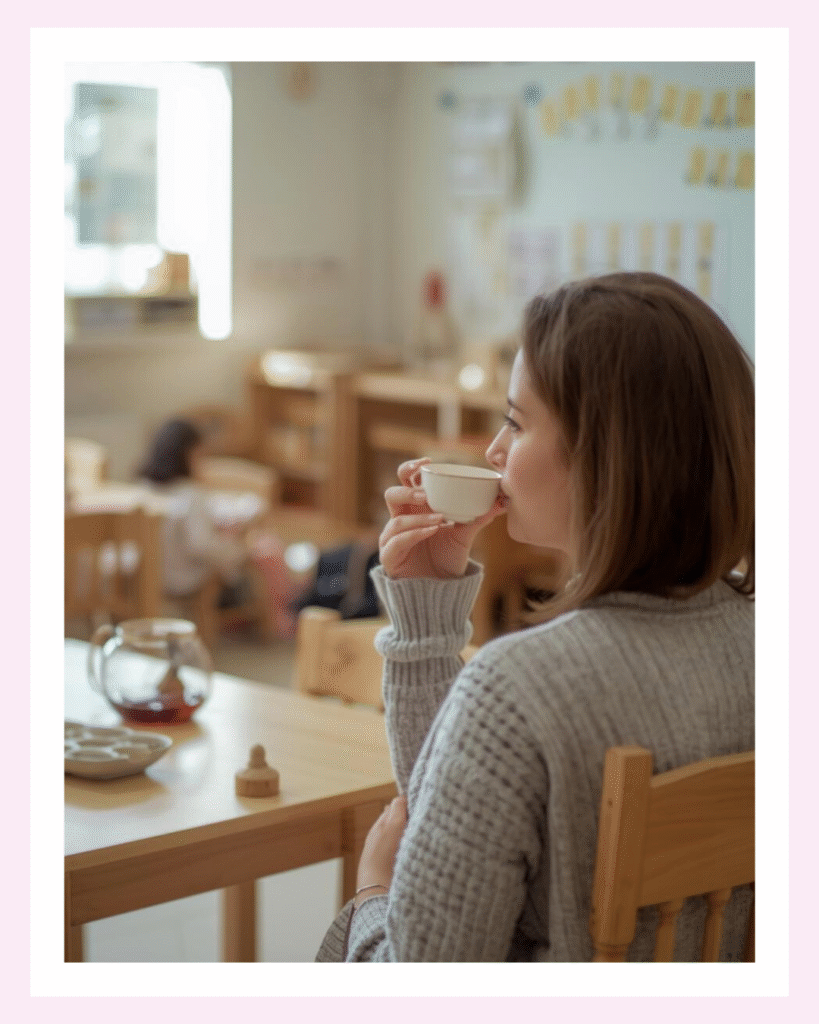
An Observing Mindset
I became committed to developing a mindset of observation as my top priority. I knew that I had to start small and manageable or I wouldn’t be developing a new habit. I began to stop throughout the day to check in with myself. I set my watch for one time in the morning when I would stop whatever I was doing (Finishing the lesson in progress first, of course!) and simply look around the classroom for 1 full minute.
That full minute seemed long when I started, but soon, with daily practice and discipline to stop for just one minute, I began to yearn for a little more time. That is when I developed a ritual: stopping for a cup of tea inside my classroom at a consistent time in the morning. Here’s what I did during that short in-class break.
KEY IDEA: Shift your mindset from “Always doing” to “Moments of Being.”
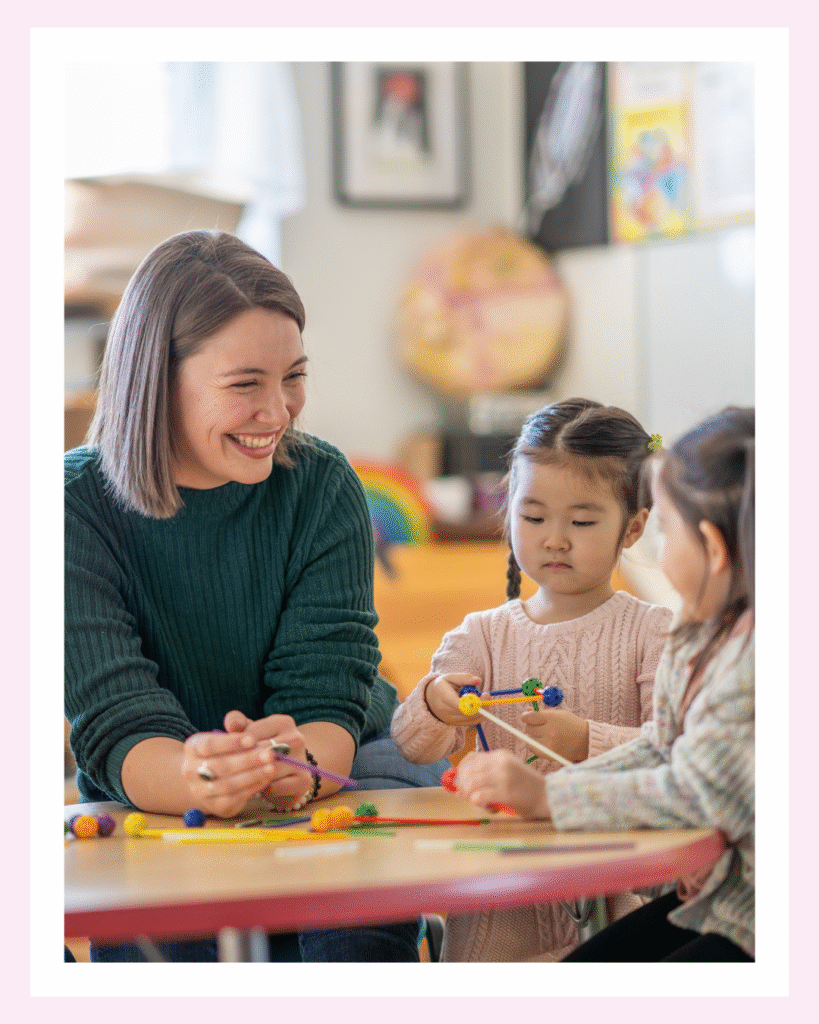
Developing the Skill of Awareness
The break was a pause, a time that I set aside for myself to just sit without expectations, without the requirement of notetaking, just time to sit quietly, take some long slow breaths, and to feel the energy of whatever was going on in the classroom. I concentrated on smiling so that the students would not see my stillness as “watching” them with any mal-intent. I began to notice things I typically didn’t see: the fidgety student who always seemed to be moving: not always. She actually was focused more often than I had noted before. Students were practicing lessons and sometimes dropped notes by my side asking for new lessons. Instead of me pushing to get more lessons in, my students were asking for more. And the systems? They were working…without me!
Over time, this daily 2-3 minute “in classroom break” showed me that I needed to stop doing and start being. My awareness of what was happening in the classroom got better because I began to see things that I missed when I was too busy. I learned that slowing down to a halt had some major benefits for the students…instead of my previous mindset that I had to be 100% available in order to be fulfilling my role. Simply not true.
KEY IDEA: As your awareness levels rise, your creative side will have the mental space to achieve!
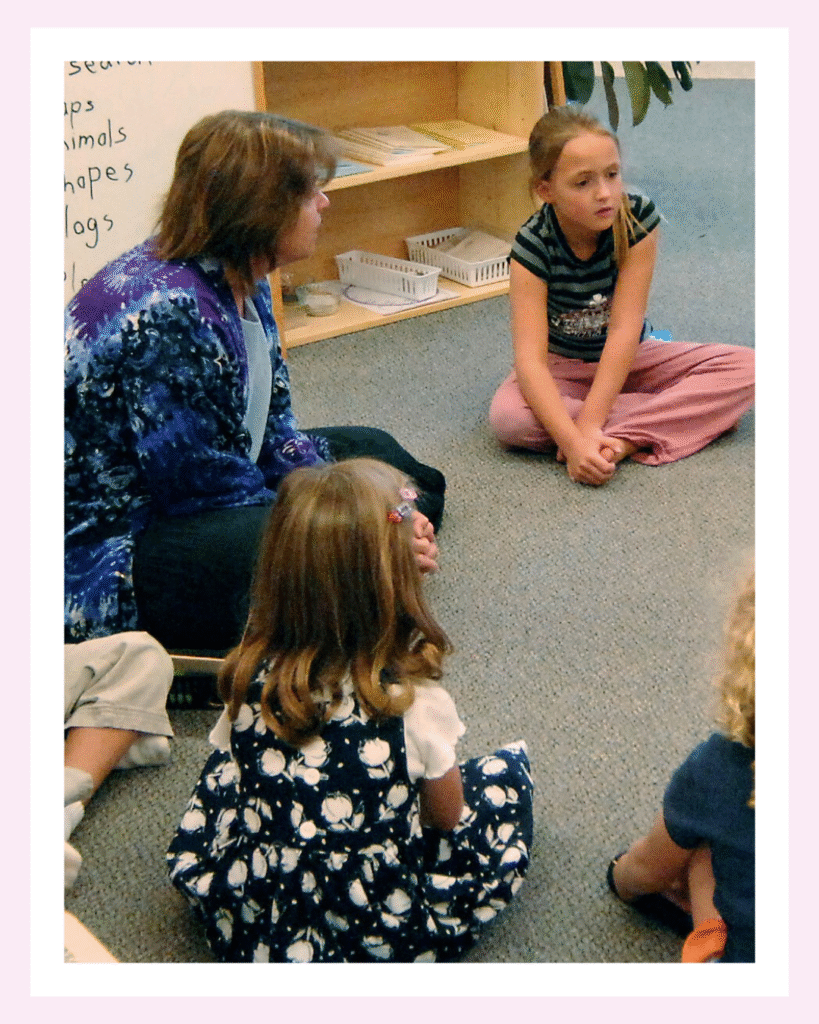
Developing Rituals
To ritualize any consistent activity, I believe it has to fulfill two requirements: it has to feel really good and you have to experience real value. In other words, It has to feel worth the time you are giving it and you have to enjoy doing it…nearly every time.
I loved my in-class breaks, sitting with my tea or coffee, and just breathing. When I taught my students that I was doing my important work of “observing” and needed their help, I also solicited ideas from them about what they could do when I was not available to them. Along with the usual things (Ask yourself, Ask a friend, Change the work or read until an adult can help) I also suggested they could take a mental break when they saw me observing. We taught a little centering ritual they could choose whenever they needed it. Some children really took to this and the entire classroom seemed to quiet during these brief times…not usually more than 5-10 minutes for me, but the result for the remainder of the morning was gentler and softer.
KEY IDEA: Share your “work” with the students, ask for support, offer them the ritual.
Teaching students to pause, to breathe, to take a few moments of space in between activities helps with creative thinking and peaceful compassion without the guilt that can come when you try to “teach” a virtue that reminds a child they aren’t measuring up to it.
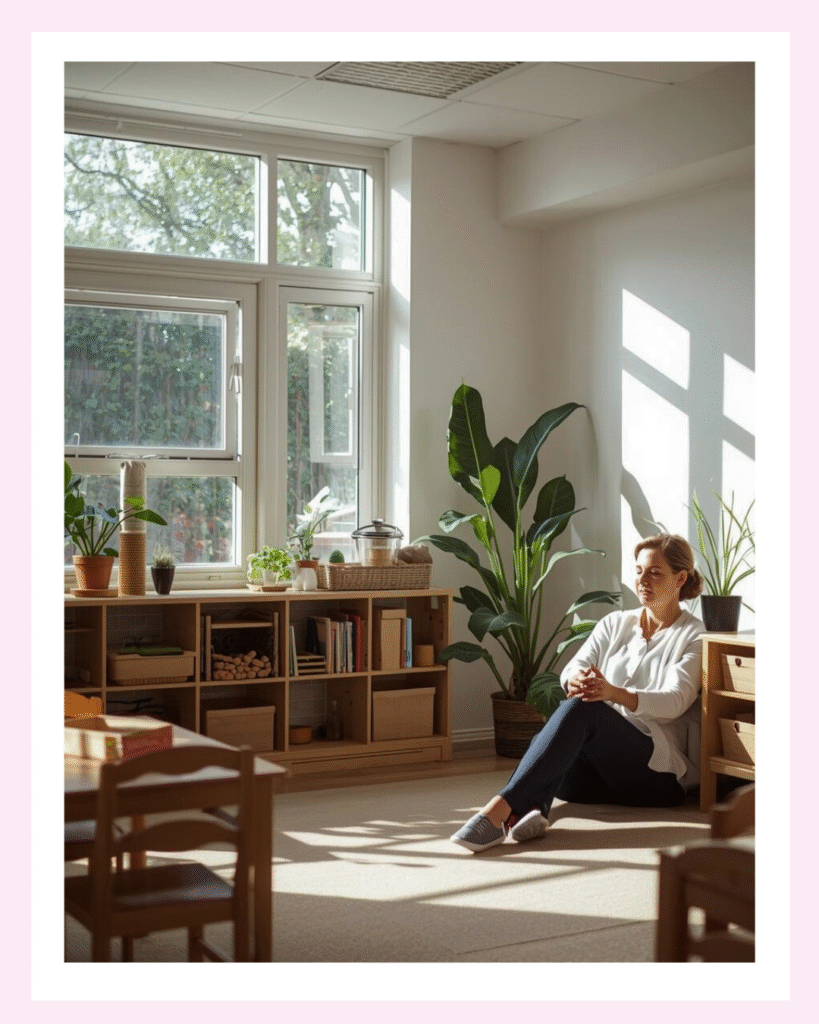
The Note-taking Choice
Sometimes the pressure to take notes pulled me away from the enjoyment of the pause, so I chose not to take notes unless I saw something that I literally didn’t want to forget. When that happened, I then had a question to resolve in my next “pause” time. In Paul Epstein’s book, The Observation Core, he talks about specific goals of an observation. I found my “specific goals” during the unstructured pause when I was simply stopping and noticing.
I learned that when I went into my observation time with a long list of things I thought I “should’ be observing for, I felt pressure to “see” what I hoped to see. That pressure often kept me from actually sitting down. I needed to create a new “path of least resistance” to observing. That path was two-fold: either genuine peaceful moments during the in-class break or deep curiosity about something I’d seen during that peaceful break. These two together kept me yearning for those moments which made my commitment to the time easier and more consistent.
KEY IDEA: You don’t have to take notes; only when you are curious or want to remember.
The awareness and calm that you’ll develop in this new kind of observation practice allows you to embrace the time and look forward to it, rather than feeling it as an obligatory burden that you never seem to have time to manage. Remember:
KEY IDEA: There’s always time for what matters most.
And what matters most is that you take a little time to pause during your morning. You’ll start to notice that you move through your days with greater peace, increased trust of yourself and your students, and confidence in the actions you’ll take to respond to a challenge…short-term or long…knowing that each time you practice, you’ll be gaining new awareness that will lead you back to the answers that are waiting in your heart.
If you’d like to learn more, consider these two self-guided classes to take you deeper into the skill and discipline of observation.
Take the Challenge: 21 Days to Observation That Rejuvenates will guide you to develop the Ritual of a Pause.
Get more out of your time observing: Learning to Observe Your Child(ren) teaches new skills in ongoing notetaking (great for those short PAUSE moments) and taking meaning from what you see. It’s a whole new way of thinking about observation that will make it easier, more effective, and time-efficient.
Did you enjoy reading? Join our email list (sign up below) for more ideas and special discounts from Claudia Mann & Inspired Learning Through Montessori Education.

